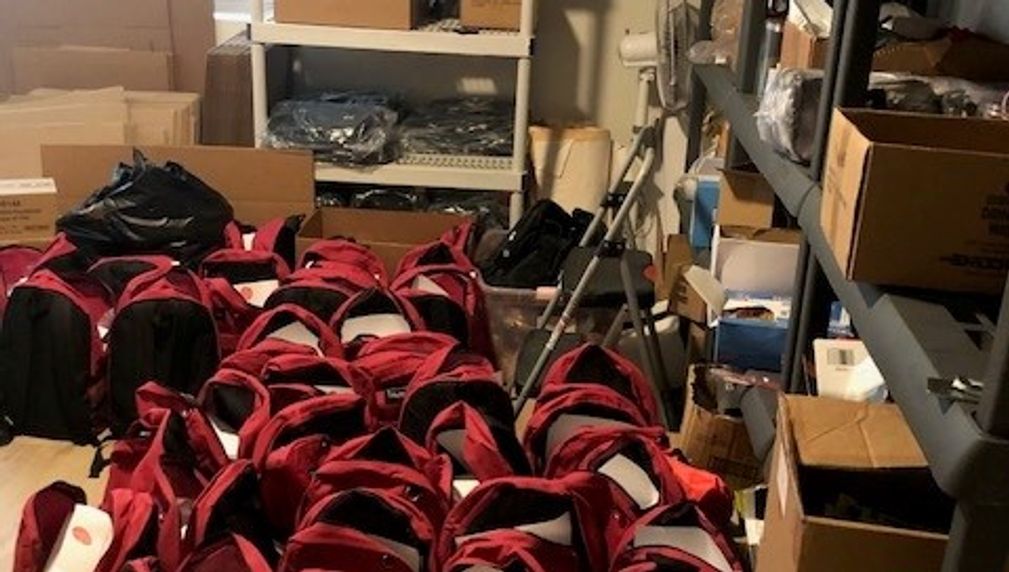Being Prepared CAN Save Lives!
We have experienced the unimaginable! Emergencies can happen at anytime! This program brings emergency preparedness education directly into schools serving low-income communities.Students learn the tools on how to be ready for earthquakes, fires, and evacuations—what supplies to have, where to go, and how to be safe.They’ll take this knowledge home, helping their families prepare and stay protected. One prepared student can lead an entire household to a feeling of readiness. Students feel empowered to teach their family to be prepared and safe.

What is the primary issue area that your application will impact?
Community safety
In which areas of Los Angeles will you be directly working?
Central LA East LA South LA San Gabriel Valley West LA San Fernando Valley Gateway Cities South Bay Long Beach Antelope Valley County of Los Angeles (select only if your project has a countywide benefit) City of Los Angeles (select only if your project has a citywide benefit)
In what stage of innovation is this project, program, or initiative?
Expand existing project, program, or initiative (expanding and continuing ongoing, successful work)
What is your understanding of the issue that you are seeking to address?
I have worked in the emergency preparedness field for 20 years, teaching families, organizations, and companies how to prepare for disasters such as earthquakes, fires, and evacuations. Emergencies can happen at any time, and yet 95% of people are not prepared. Many don’t know where to start and feel overwhelmed—I help make the process simple and approachable with hands on learning. Often, this topic isn’t even on a family’s radar, especially in underserved communities. My goal is to change that by raising awareness and delivering practical, life-saving education. I want to empower people with the tools and confidence they need to protect themselves and their loved ones. Through my work, I’ve seen how preparation transforms fear into action. By teaching these skills—especially to students—we can spark a ripple effect, reaching entire households. Preparedness isn’t just a checklist; it’s a mindset, a plan, and a path to resilience that everyone deserves.
Describe the project, program, or initiative this grant will support to address the issue.
I’ve developed a program for school-age children K-12, that teaches them how to prepare themselves and their homes for emergency situations. Preparedness can feel overwhelming, but I show them simple ways to get ready with everyday items like water bottles and flashlights. Depending on the age group, we offer coloring pages, worksheets, and hands-on activities to reinforce key lessons. Kids learn essential skills such as DROP, COVER, AND HOLD, where to go in their home in the event of an earthquake, basic first aid, calling 911, and even using a fire extinguisher. During an earthquake, many people run outside, but this can be dangerous. I teach families the correct actions to take, where to go, and how to stay safe. Evacuation is another key topic we cover including when and how to evacuate, and where to go afterward. Knowing what to do and having hands-on experience will give families peace of mind, knowing they are equipped to protect their loved ones and potentially save lives. This program empowers children and their families to take control of their safety. Additionally, I want to provide emergency supplies to families who cannot afford them. In certain families, we need to address not only parents, but grandparents and other people living in the home. While we currently have curriculum in place, we will be tayloring those lessons accordingly. As different emergencies occur, we are constantly updating our lessons based upon lessons learned from our first responders.
Describe how Los Angeles County will be different if your work is successful.
When an emergency strikes, response teams focus on the most severely impacted areas. If your home has minimal damage or is unaffected, and you just need a few supplies, you’re on your own for at least 24–72 hours. By teaching students—and ultimately their families—how to prepare, they’ll be equipped to handle emergencies and keep their loved ones safe. Additionally, these lessons can be shared with neighbors, strengthening the community. This empowers families to become self-sufficient, reducing unnecessary 911 calls and easing the burden on responders. Prepared families can manage on their own, allowing emergency services to focus on those in urgent need. Teaching LA County students and families to prepare in advance creates more resilient communities, ensuring that when disaster strikes, people know how to act and protect their loved ones. This proactive approach strengthens the entire county, minimizing strain on response teams and making LA safer, one prepared family at a time.
Approximately how many people will be impacted by this project, program, or initiative?
Direct Impact: 1,000
Indirect Impact: 5,000